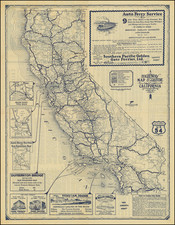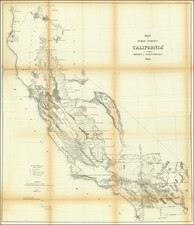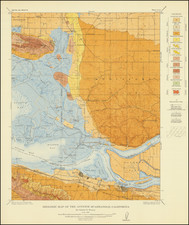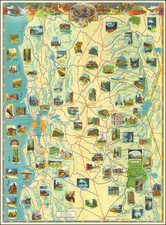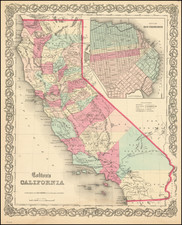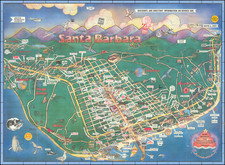Victoriano Guerrero Ranch -- Half Moon Bay -- Lithographed by California's First African American Lithographer
Rare early view of the Guerrero Ranch and Dairy Farm, from Moore & De Pue's Illustrated History of San Mateo County.
The ranch shown was then the property of Victoriano Guerrero, the son of Francisco Guerrero, the original owner of Rancho Corral de Tierra. Francisco Guerrero was Yerba Buena's third and sixth alcalde, after whom Guerrero St. in San Francisco is named. When Francisco was murdered, Victoriano inherited the spanish land grant.
Shortly after this image was made, in 1881, German immigrant Jurgen Wienke bought a large section of the rancho that would become known as Moss Beach, while Victoriano continued to own a portion of the Rancho until his death in 1928.
Half Moon Bay
Half Moon Bay began as an agricultural area, for the Mission San Francisco de Asís, for grazing of cattle, horses, and oxen. After the Mission's secularization, Tiburcio Vásquez received the Rancho Corral de Tierra Mexican land grant in 1839 and Candelario Miramontes was granted Rancho Miramontes (later known as Rancho San Benito) in 1841.
The community began to develop in the 1840s as San Mateo County's first real town. Originally called San Benito, the town was renamed Spanishtown, and became a thriving fishing village. Regular stagecoach service was established with San Mateo, as well as Purissima, Lobitos, and San Gregorio. Spanishtown was officially renamed Half Moon Bay in 1874.
G.T. Brown
Grafton Tyler Brown is perhaps the first and unquestionably the most famous African American artist and lithographer to depict California and the Pacific Coast. Born in Harrisburg, Pennsylvania, February 22, 1841, Brown moved to San Francisco at the age of 20 and learned the art of lithography from C. C. Kuchel. In 1861 and again in 1864, Brown created the two earliest bird's eye views of Virginia City. At the age of 26, he established his own firm, G.T. Brown & Co.
Brown produced skillfully illustrated bank notes, labels, and maps, and stock certificates for Wells Fargo, Levi Strauss and Co., and several mining companies. His significant lithographic production, The Illustrated History of San Mateo County (1878), featured 72 views of the county's communities and ranches. Brown traveled throughout Oregon, Washington, Idaho, Wyoming, Nevada, and British Columbia (where he settled in 1882), producing maps and illustrations, including many landscape paintings.
In 1893, Brown secured employment as a draftsman at the St. Paul, Minnesota office of the U.S. Army Corps of Engineers. Sometime during his St. Paul years he married Elberta Brown. Brown's work with the Corps of Engineers ended in December 1897, after which he worked in the civil engineering department of the city of St. Paul until 1910. He died on March 3, 1918, in Nicollet County, Minnesota, bringing to a close a rich and varied career as an artist and illustrator of the American West.
Grafton Tyler Brown, perhaps the first African American artist to depict California and the Pacific Coast, was born in Harrisburg, Pennsylvania, February 22, 1841. Before he was twenty, Brown moved to San Francisco and learned the art of lithography from C. C. Kuchel. In 1861 and again in 1864, Brown created the two earliest bird's eye views of Virginia City. At the age of twenty-six, he established his own firm, G.T. Brown & Co.
At San Francisco, and elsewhere in California, Brown produced skillfully illustrated bank notes, labels, and maps, and stock certificates for Wells Fargo, Levi Strauss and Co., and several mining companies. His significant lithographic production, The Illustrated History of San Mateo County (1878), featured seventy-two views of the county's communities and ranches. Brown traveled throughout Oregon, Washington, Idaho, Wyoming, Nevada, and British Columbia (where he settled in 1882), producing maps and illustrations, including many landscape paintings.
In 1893, Brown secured employment as a draftsman at the St. Paul, Minnesota office of the U.S. Army Corps of Engineers. Sometime during his St. Paul years he married Elberta Brown. Brown's work with the Corps of Engineers ended in December 1897, after which he worked in the civil engineering department of the city of St. Paul until 1910. He died on March 3, 1918, in Nicollet County, Minnesota, bringing to a close a rich and varied career as an artist and illustrator of the American West.









